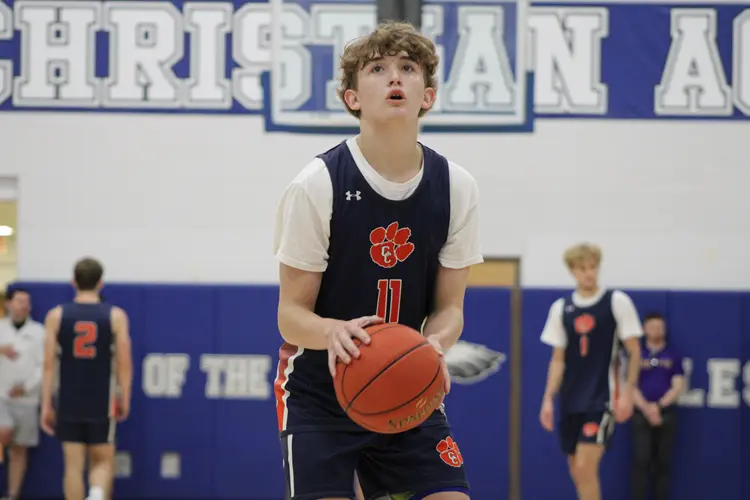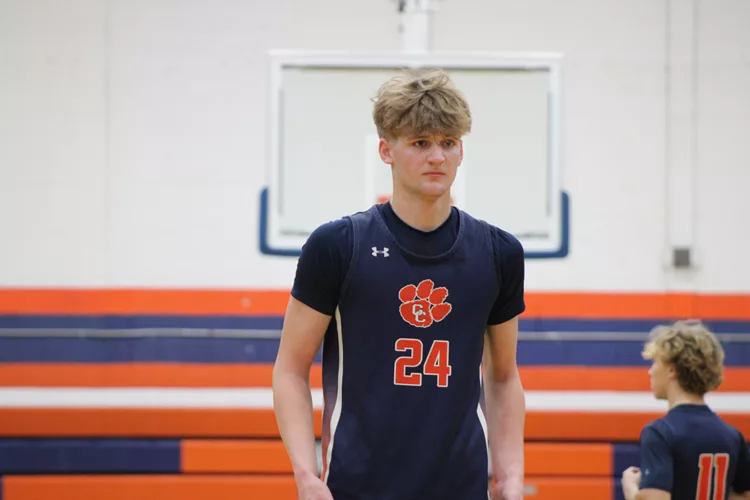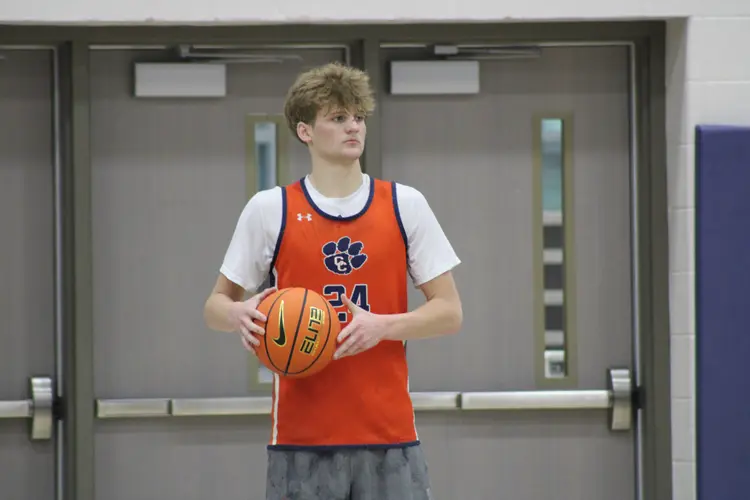
The guidelines focus on how to screen participants in practice or competition, testing protocols, how to return from a positive test, attendance, and guidance on specific sports.
The KHSAA is requiring local school systems to develop specific protocols for screening student-athletes and attendees for events. This includes gate workers taking the temperature of anyone entering the stadium/gymnasium. If the temperature is below 100.4, they pass the screening and move forward. It is recommended that school districts allow for the temperature to be rechecked after “5-to-10 minutes of sitting in a cooler environment.” If the temperature remains above 100.4, he or she will not be allowed inside.
In addition to temperature and symptom screenings, districts will be required to collect contact information from anyone that enters the facility.
In the case of someone starting to show symptoms of COVID-19 during a game or practice, they must be “placed in an identified and designated quarantine area with a mask,” according to the KHSAA.
If a student-athlete does test positive, the following five-step plan must be initiated by school districts:
- Step 1: (2-Days Minimum) Light activity (walking, jogging, stationary bike) for 15 minutes or less at intensity no greater than 70% of maximum heart rate. NO resistance training.
- Step 2: (1-day minimum) Add simple movement activities (For example, running drills) for 30 minutes or less at intensity no greater than 80% of maximum heart rate.
- Step 3: (1-day minimum) Progress to more complex training for 45 minutes or less at intensity no greater than 80% maximum heart rate. May add light resistance training.
- Step 4: (2-days minimum) Normal training activity for 60 minutes or less at intensity no greater than 80% maximum heart rate.
- Step 5: Return to full activity
Before practice and competitions, facilities will be wiped down and sanitized. This includes, but is not limited to, chairs, weight room equipment, bathrooms, bleachers, etc.
Students will be encouraged to shower and wash their workout clothing immediately upon returning home after practice and competition. On the sidelines, there will not be any hydration stations and instead, students will have their designated water bottle.
As far as locker rooms, the KHSAA says that indoor locker rooms should not be used whenever possible. Outdoor canopies and areas should be used in replace of the indoor settings. This is due to extra cleaning that would have to take place in locker rooms.
During games, the principal of a school will designate a “contest manager.” That person will have complete authority to order a game be delayed or stopped should COVID-19 protocols not be properly followed.
Attendance at Games
In the release, the KHSAA said that attendance requirements should be discussed between the school and the local health departments. The recommendation is that it be split into three tiers. The first being athletes, coaches, officials, medical staff, and other essential personnel. The second being media, band, and cheerleaders. The third being regular spectators.
While in the bleachers, families will sit in pods that must be at least six feet apart from different groups.
As a starting point, the KHSAA recommends that a segmented approach be the goal for attendance. For example, “segment one” would have 20% attendance, “segment two” would be 30%, and “segment three” would be 40%.
Officials do recommend that priority be given to the families of competitors on both the host and visiting schools before allowing non-family members into the stadium.
Masks will be required by attendees at all times.
Cheerleaders and Band
Cheerleaders will be allowed to be at games but will have to adhere to certain protocols. The KHSAA says that they will need to be separate from the teams and fans in attendance. In congruence with the segmented approach to attendance, a similar process will take place for cheerleaders. “Segment one” will allow for 20 per school, “segment two” will allow for 25, and “segment three” will allow for 30.
While on the sidelines, cheerleaders will be required to wear a mask.
A specific segmented approach was not given to impact band members, but it was said that schools should consider reducing the full amount of the band due to attendance limitations. The KHSAA also referred to the KMEA’s plans for halftime performances.
Guidelines for Soccer
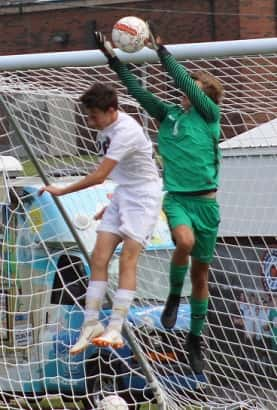 Teams are allowed to begin practice on August 24th with the first official game begin held on September 7th.
Teams are allowed to begin practice on August 24th with the first official game begin held on September 7th.
During games, the soccer ball should be regularly and routinely cleaned whenever possible. To speed up the process, three balls should be kept with one being in play, one being cleaned, and one ready to be put in play. The process to clean balls can be done using either the “soap and water” or “disinfecting wipe” method.
At the field, rosters will be limited to no more than 24 in uniform. If cones are used during warm-ups, only members of the coaching staff should be allowed to touch them. If there is an injury, it is recommended that only coaches and medical personnel remain within six feet of the injured player.
The KHSAA has also approved the following rule changes for soccer for this season:
- Rule 3-3; 3-4 – Require all substitutes awaiting entry to observe social distance.
- Rule 4-1 – Cloth mask/face covering is permitted for players (no color restrictions).
- Rule 4-1 – Gloves are permitted for players (no color restrictions).
- Rule 4-1-1 – Long pants are permitted for players.
- Rule 4-1-1 – Long Sleeves are permitted for players.
- Rule 4-1-1d – Undergarments are permitted, but must be the same solid color for the team.
Guidelines for Volleyball
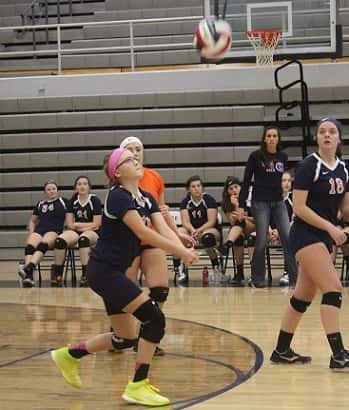 As with soccer, teams are allowed to begin practice on August 24th with the first official game begin held on September 7th.
As with soccer, teams are allowed to begin practice on August 24th with the first official game begin held on September 7th.
In a similar process to the above, three balls must be kept at the court with one being in play, one being cleaned and the other ready to go into play.
On the court, only uniformed players will be allowed to fetch balls that might leave the court. The KHSAA is also recommending that fan seating is on the opposite side of the benches.
The KHSAA has approved the following rule changes for volleyball for this season:
- Rules 1-2-4a; 1-6-3; – Suspend the use of the coin toss to determine serve/receive. The visiting team will serve first in set 1 and alternate first serve for the remaining non-deciding sets.
- Rules 4-1-4; 4-1-1 – Masks/face coverings are permissible; Gloves are permissible (no color restrictions).
- Rules 4-2-1; 4-2-1i(1) – Long sleeves are permissible; Long pants are permissible.
- Rules 4-2-1h (3); 4-2-1i (2) – Undergarments are permissible, but must be unadorned and of a single, solid color similar in color to the predominant color of the uniform top or bottom.
- Rules 5-4-4b, 9-12, NOTE, 9-3-3b – Suspend protocol of teams switching benches between sets. In the event there is a clear and distinct disadvantage, teams may switch sides, observing all social distancing protocols. Officials will determine if a distinct disadvantage is present.
- Rules 7-1-1; 7-1-1 PENALTIES 1; 9-1a; 12-2-3 – Suspend roster submission at the pre-match conference. Rosters are submitted directly to officials’ table before the 10-minute mark.
Guidelines for Cross Country
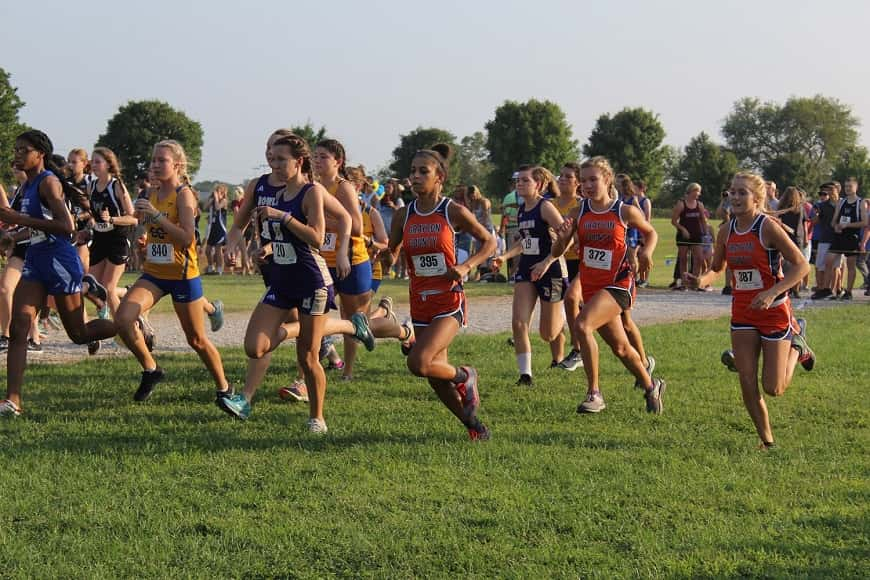 Before meets begin, the KHSAA is heavily recommending that all information be transmitted electronically.
Before meets begin, the KHSAA is heavily recommending that all information be transmitted electronically.
Once teams arrive at the course, it is being strongly discouraged for teams to use team tents and instead is recommended to utilize an option for “open-air tarps and space markers.”
As the race begins, there should be starting boxes marked for each team to start from. Each box should be at least six feet from each other competing team.
One of the bigger changes is the introduction of staggered start times. The official timer for the event would coordinate to ensure the proper timing of the runners.
From September 7th-26th, races will be limited to 100 total runners with no more than 40 per “wave” and races are recommended to not be longer than 2500m. From September 28th-October 9th, event capacity will be 180 runners and will not be longer than 3500m. To close the season, races will be held to no more than 250 and will not be longer than 5000m.
Guidelines for Football
 The 2020 high school football season will begin on September 11th with teams playing a maximum of nine regular-season games.
The 2020 high school football season will begin on September 11th with teams playing a maximum of nine regular-season games.
Requirements instituted by the KHSAA include roster limits of 60 players, non-uniformed team members are not allowed on the sidelines, and the suspension of pre/postgame shaking of hands. During the pregame coin toss, only the head coaches and select officials will be allowed.
As with the other sports, footballs are requested to be changed and cleaned as much as it is possible.
The KHSAA has also initiated multiple rule changes. Those include the extension of the team box to the 10-yard line of both sides of the field to create more space for teams to properly spread out. Coaches will not be allowed on the field for any instance unless they call a timeout. The time limits for timeouts and quarter breaks will be extended to a length of up to two minutes for players to have enough time to properly hydrate.
For the complete, nearly 50-page, return to sports document released by the KHSAA on Wednesday, you can click this link. High school practices are underway in the state with the first games scheduled for the week of September 7th.
By Sam Gormley, Play-By-Play Announcer/Local Sports
Reach Sam at sam@k105.com





